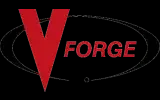Thixomolding is an innovative and increasingly popular manufacturing process utilized across a variety of sectors, including medical, aerospace, industrial, marine, transportation, and recreational goods. This guide delves into the essence of thixomolding, highlighting its benefits, applications, and potential to revolutionize operations for original equipment manufacturers (OEMs).
What is Thixomolding?
Thixomolding is a semi-solid metal processing technique, especially effective with magnesium alloys. This process involves injecting a thixotropic (semi-solid) metal slurry into a mold to produce precise, high-strength components. Unlike traditional metal casting, which uses fully molten metals, thixomolding employs metal that is partially solid and partially liquid, offering unique material properties and manufacturing benefits.
The Thixomolding Process Explained
The thixomolding process begins with magnesium alloy pellets heated to a semi-solid state, typically around 570°C (1,058°F). These pellets are fed into a machine that kneads them into a thixotropic state, characterized by both solid and liquid properties. The resulting semi-solid slurry is then injected into a mold under high pressure. As the material cools and solidifies within the mold, it forms parts with complex geometries and fine details.
Advantages of Thixomolding
Thixomolding offers numerous advantages, making it an attractive choice for OEMs in various industries:
Superior Mechanical Properties
Components produced through thixomolding boast excellent mechanical properties, such as high strength-to-weight ratios, enhanced durability, and better fatigue resistance. These features are crucial for applications requiring robust performance under demanding conditions, such as aerospace and medical sectors.
Precision and Complexity
Thixomolding allows for the creation of intricate and detailed parts with tight tolerances. This is vital for industries like medical and aerospace, where components often need to meet stringent specifications.
Reduced Porosity
The semi-solid state of the material significantly reduces porosity, resulting in higher-quality parts with fewer defects. This benefit is particularly important for applications where structural integrity and reliability are critical.
Environmental Benefits
Thixomolding is a cleaner process compared to traditional die casting, producing fewer emissions and generating less waste. This aligns with the growing emphasis on sustainability in manufacturing, enabling OEMs to enhance their corporate responsibility profiles.
Cost Efficiency
The efficiency of the thixomolding process can lead to cost savings in material usage and post-processing. The ability to produce near-net-shape parts reduces the need for extensive machining and finishing, lowering overall production costs.
Applications of Thixomolding
Thixomolding is employed in a variety of industries, each benefiting from the unique properties of magnesium alloy components:
Medical Devices
In the medical industry, thixomolding creates lightweight, durable components for devices such as surgical instruments, orthopedic implants, and diagnostic equipment. The precision and biocompatibility of magnesium alloys make them ideal for these critical applications.
Aerospace
Aerospace manufacturers use thixomolding to produce high-performance components like brackets, housings, and structural elements. The strength and lightweight nature of magnesium alloys help reduce the overall weight of aircraft, contributing to fuel efficiency and performance.
Industrial Automation
Thixomolding produces robust parts for industrial applications that can withstand harsh operating environments. This includes components for machinery, robotics, and automation systems, where durability and reliability are essential.
Marine and Transportation
In marine and transportation sectors, thixomolding is used to manufacture lightweight and corrosion-resistant parts for vehicles and vessels. This includes engine components, brackets, and housings, benefiting from the superior properties of magnesium alloys.
Recreational Goods
Thixomolding is prevalent in producing recreational goods such as bicycles, sports equipment, and outdoor gear. The process allows for the creation of lightweight, durable products that enhance performance and user experience.
Considerations for OEMs
OEMs looking to integrate thixomolding into their manufacturing processes should consider several factors:
Material Selection
Choosing the right magnesium alloy is crucial for achieving the desired properties in the final product. Different alloys offer varying degrees of strength, ductility, and corrosion resistance.
Design for Thixomolding
Designing components specifically for the thixomolding process can optimize its benefits. This includes considering factors such as wall thickness, draft angles, and the overall geometry of the part.
Conclusion
Thixomolding represents a significant advancement in manufacturing technology, offering numerous benefits to OEMs across various industries. Its ability to produce high-quality, precision components with excellent mechanical properties makes it a valuable tool for addressing modern manufacturing challenges. By understanding and leveraging the advantages of thixomolding, OEMs can enhance their product offerings, improve efficiency, and maintain competitiveness in their respective markets.
For OEMs seeking to differentiate themselves in a competitive landscape, thixomolding offers robust contract manufacturing capabilities that can lead to innovative and superior product solutions.





Comments